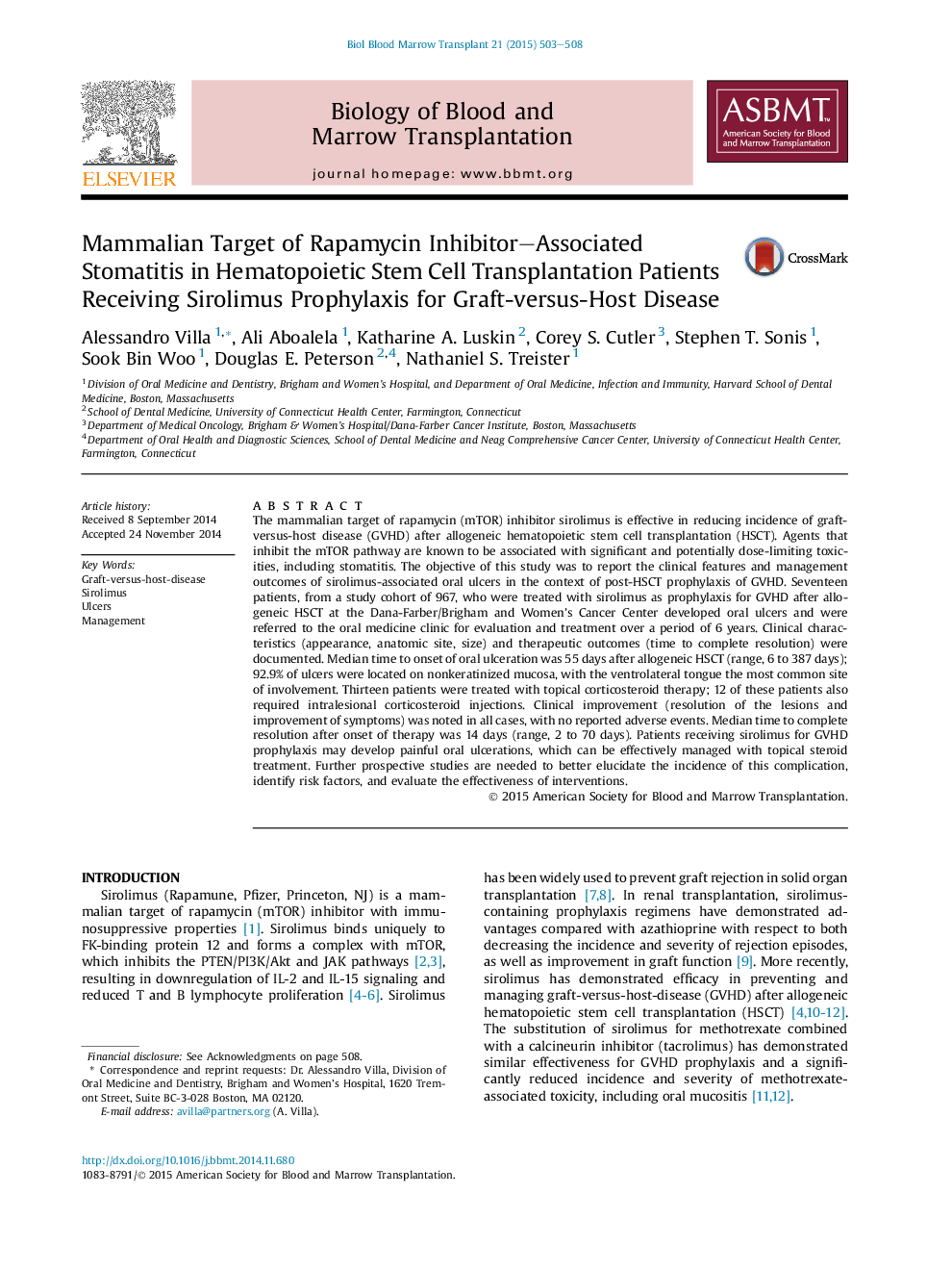| Article ID | Journal | Published Year | Pages | File Type |
|---|---|---|---|---|
| 2101522 | Biology of Blood and Marrow Transplantation | 2015 | 6 Pages |
•We report cases of mTOR inhibitor-associated stomatitis in the context of graft-versus-host disease prophylaxis with sirolimus after allogeneic hematopoietic stem cell transplantation.•mTOR inhibitor-associated stomatitis in the context of graft-versus-host disease prophylaxis with sirolimus appears to be an infrequent complication•Oral ulcers were mostly small, ovoid, or round, covered by a grayish-white fibrin pseudomembrane with an erythematous halo.•All patients experienced a complete response with intralesional or topical corticosteroid therapy.•No modification or discontinuation of mTOR inhibitor therapy is required.
The mammalian target of rapamycin (mTOR) inhibitor sirolimus is effective in reducing incidence of graft-versus-host disease (GVHD) after allogeneic hematopoietic stem cell transplantation (HSCT). Agents that inhibit the mTOR pathway are known to be associated with significant and potentially dose-limiting toxicities, including stomatitis. The objective of this study was to report the clinical features and management outcomes of sirolimus-associated oral ulcers in the context of post-HSCT prophylaxis of GVHD. Seventeen patients, from a study cohort of 967, who were treated with sirolimus as prophylaxis for GVHD after allogeneic HSCT at the Dana-Farber/Brigham and Women's Cancer Center developed oral ulcers and were referred to the oral medicine clinic for evaluation and treatment over a period of 6 years. Clinical characteristics (appearance, anatomic site, size) and therapeutic outcomes (time to complete resolution) were documented. Median time to onset of oral ulceration was 55 days after allogeneic HSCT (range, 6 to 387 days); 92.9% of ulcers were located on nonkeratinized mucosa, with the ventrolateral tongue the most common site of involvement. Thirteen patients were treated with topical corticosteroid therapy; 12 of these patients also required intralesional corticosteroid injections. Clinical improvement (resolution of the lesions and improvement of symptoms) was noted in all cases, with no reported adverse events. Median time to complete resolution after onset of therapy was 14 days (range, 2 to 70 days). Patients receiving sirolimus for GVHD prophylaxis may develop painful oral ulcerations, which can be effectively managed with topical steroid treatment. Further prospective studies are needed to better elucidate the incidence of this complication, identify risk factors, and evaluate the effectiveness of interventions.
